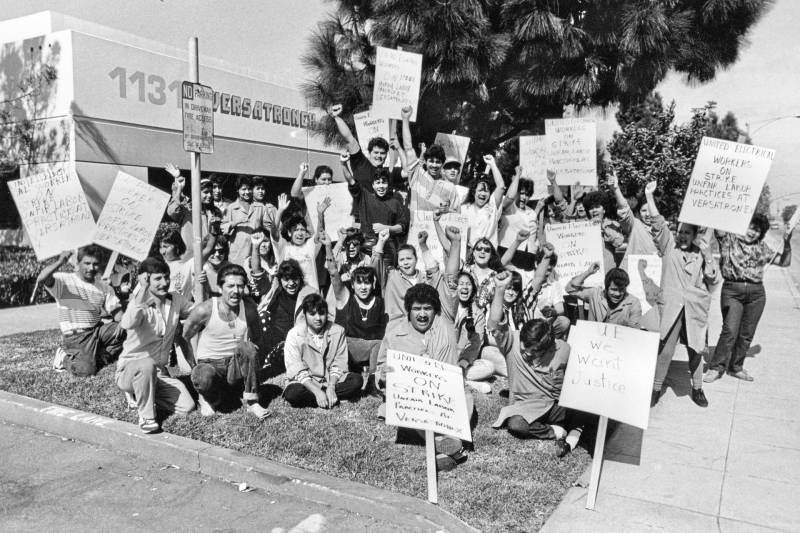More recently, labor organizers have succeeded at unionizing tech workers at a handful of companies, like Kickstarter and Imperfect Foods.
But organizing efforts are also running into many of the same historical roadblocks — along with some new ones.
Organizing in the CD-ROM Era
Marcus Courtney got an intimate look at the wave of tech worker organizing efforts in the 1990s. At the time, he was a test engineer at Microsoft, working on “mail products,” and a bunch of applications that now sound ancient.
Courtney said that, like today, many people then thought they’d be set for life if they got a job working on cutting edge technology at a place like Microsoft. But similar to many modern tech workers, Courtney was a Microsoft contractor, not an employee, so he didn’t enjoy the benefits, relatively high salaries or stock options of some of the people he worked alongside.
“Your actual personal experience as a tech worker is very different than the perception that’s been shaped in the popular culture and media,” Courtney said. “And I think that’s why we decided it was time to take action.”
Courtney and other contractors formed a group called Washington Alliance of Technology Workers, or WashTech, with help from the Communications Workers of America union. Around the same time, several hundred IBM workers created a group called Alliance@IBM.
But these union organizing efforts fell far short of recruiting the large percentage of workers required for recognition by the National Labor Relations Board. And most of these group are now long since defunct.
Myth of the Pampered Tech Worker
Following the dot-com bust in 2000, a wave of new tech companies promised more power and autonomy for their workers. The general pitch: These startups wouldn’t have standard top-down corporate hierarchies. Instead they would be “flat organizations,” where anyone with a good idea could be heard and rewarded with perks and pay. Meritocracy would rule.
Media outlets ate up and amplified this narrative for years, running stories that marveled at the gilded conditions of a relatively small group of elite workers at Silicon Valley companies like Google and Facebook.
“The media portrays tech workers as being in a position of power and control — the world is their oyster. They can switch jobs if they want and they have huge bargaining power,” said Ronil Hira, a political science professor at Howard University who has followed the tech labor market for two decades. “In reality, most tech workers are on the receiving end. They don’t have much control over their employment situation.”
This stereotype of privilege and power has long obscured the realities of the tech workforce, he said.
Hira notes that a majority of tech workers are not even located in Silicon Valley; they can more often be found in the back offices of insurance agencies, banks, and media organizations around the country.
And unlike the common depiction of pampered engineers in Silicon Valley, he adds, many tech workers face the same labor issues as those in other industries: stagnant pay, temporary contracts, the threat of outsourcing, and little say over working conditions.
Changing Attitudes on Unions
After some initial scrutiny in the 1990s, federal labor regulators largely let up on the tech industry after the dot-com bust, taking a generally light-handed approach to ongoing concerns like its heavy reliance on long-term temporary workers and outsourcing.
But even as labor issues persisted, there still wasn’t much appetite among workers to unionize. While tech workers in the U.S. shied away from unions, those in other countries more commonly adopted them, a contrast that prompted a string of studies detailing various tech worker organizing efforts.

